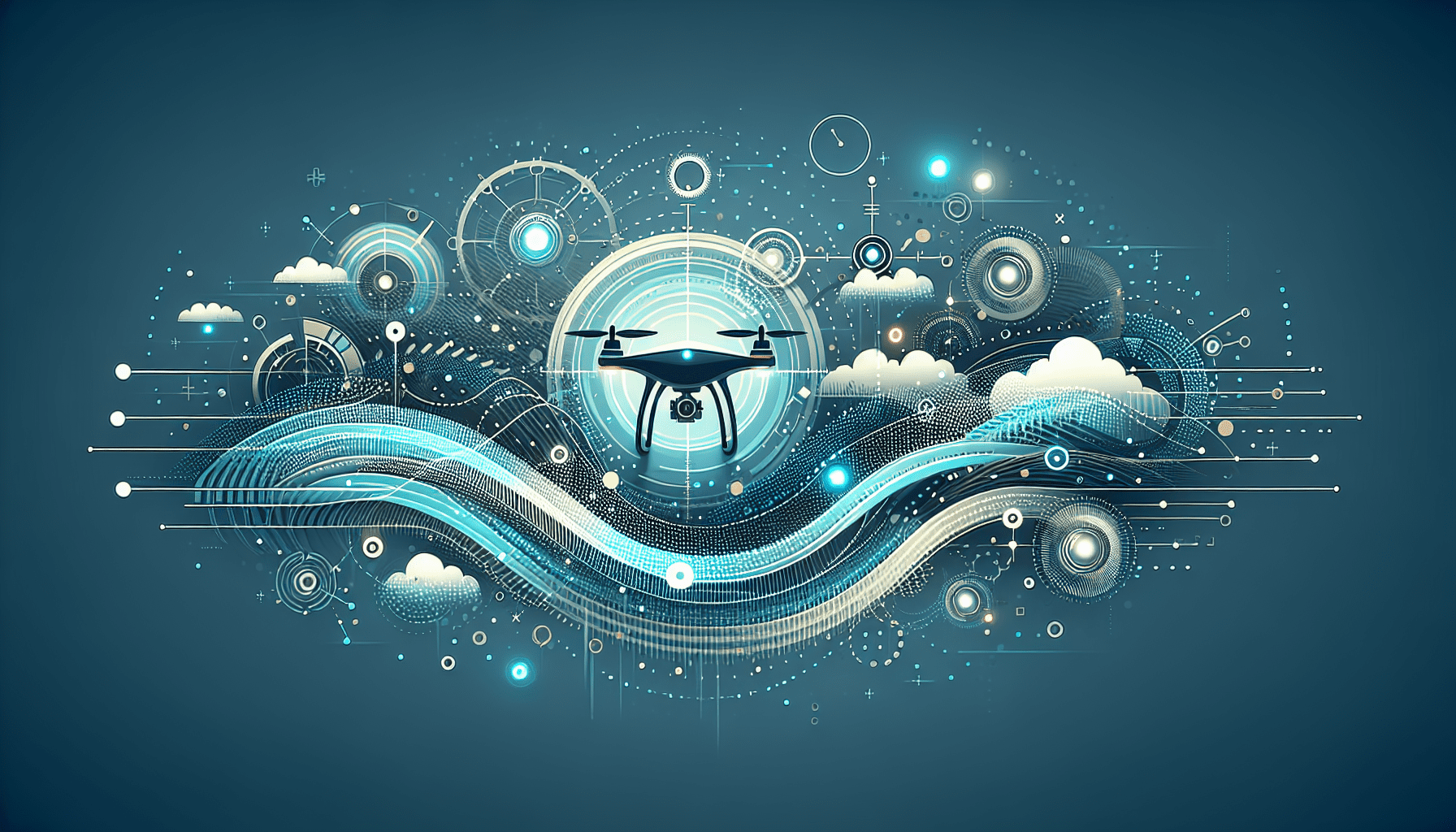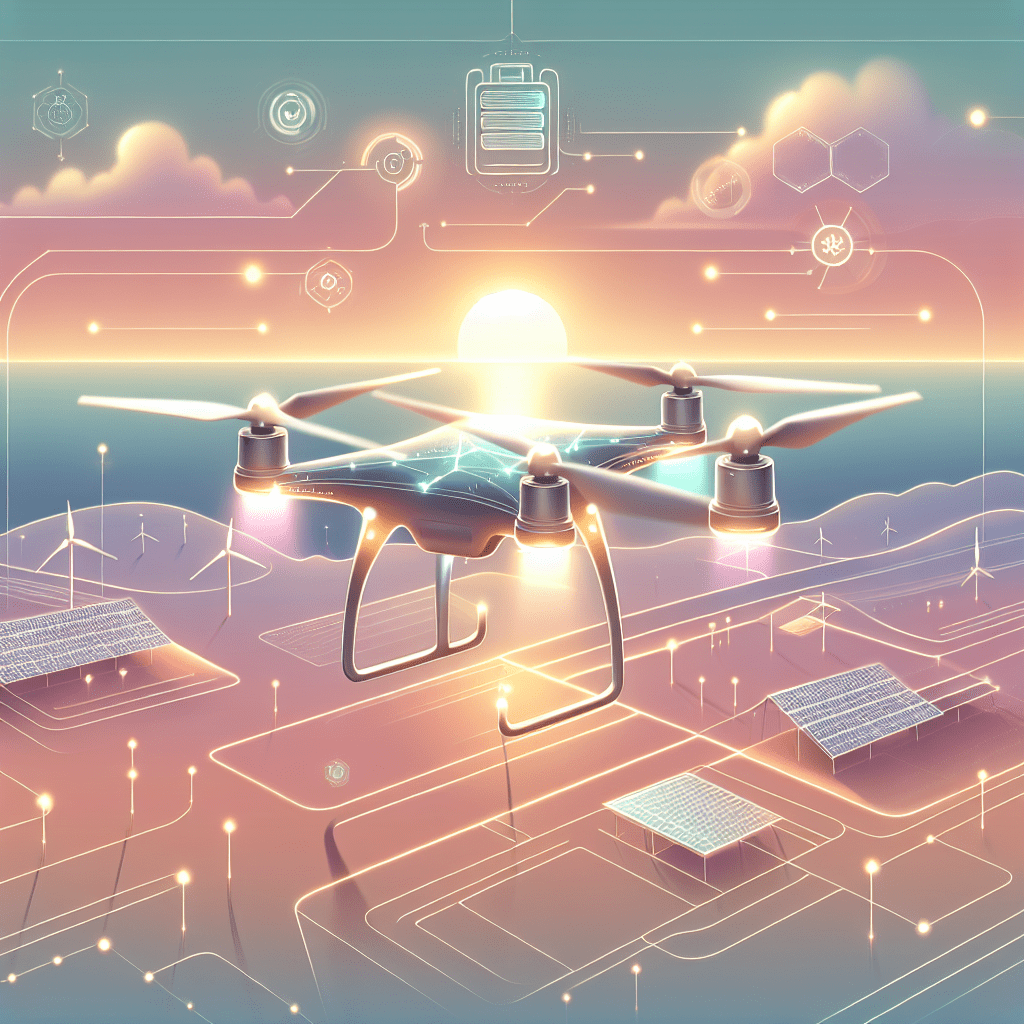Drone Battery Innovation: Optimizing Flight Time for the Future
In This Article
- Drone battery innovation is extending flight times through lightweight, high-density chemistries.
- AI optimisation and predictive analytics play a vital role in enhancing battery efficiency.
- Solar and in-flight charging offer sustainable, long-range mission potential.
- Proper storage and handling practices can double the lifespan of your drone’s battery.
- Eco-conscious solutions and next-generation materials will define the future of UAV power sources.
- Staying informed ensures strategic advantages across sectors relying on drone integration.
The Evolution of Drone Battery Technology
From Lithium-Ion to Lithium-Silicon: What’s Changing?
Drone battery innovation has rapidly increased over the last decade, transforming what drones are capable of in both commercial and recreational sectors. Originally reliant on traditional lithium-ion batteries, drones have often been constrained by limited flight duration. These early batteries, while relatively lightweight and widely available, offered only moderate energy density and a finite number of recharge cycles.
The introduction of lithium-silicon batteries marked a pivotal advancement. By substituting some of the graphite in conventional lithium-ion batteries with silicon, manufacturers have unlocked significantly higher energy capacities. These batteries not only store more power but also charge more efficiently. As a result, drone operators gain extended flight time and reduced downtime between missions. The effects are particularly impactful in fields such as aerial surveying, agriculture, and search and rescue—domains where every extra minute of airtime enhances operational efficiency.

What Is BEI Battery Technology?
Lower Weight, Higher Energy Density
BEI (Battery Energy Innovation) technology represents a new class of drone batteries designed to optimise both performance and durability. These batteries integrate hybrid chemistries combining lithium-metal, solid-state electrolytes and nanostructures, which collectively deliver an energy density up to 50% higher than standard lithium-ion cells. Lighter and more compact, BEI cells allow manufacturers to create drone models capable of exceeding the traditional 20–30-minute flight ceiling without increasing payload.
Furthermore, BEI batteries improve thermal regulation, significantly reducing the chances of overheating during rapid charging or intensive in-flight operations. This has opened the door to longer-term deployments and made it feasible for drones to be used in high-stakes environments such as military logistics and emergency response. With support for over 1000 recharge cycles, BEI technology also decreases long-term operational costs, making it a preferred choice for enterprise-grade drones.
As battery energy density increases, drones can fly farther, carry more, and cost less to operate, redefining what’s possible in autonomous flight.
How AI Is Powering Flight Efficiency
Artificial intelligence is swiftly becoming a cornerstone of drone battery innovation, particularly with respect to flight efficiency. AI-powered systems can analyse flight patterns in real time, dynamically adjusting routes and speeds to maximise battery runtime. For instance, machine learning algorithms assess environmental variables such as wind speed, air pressure, and temperature to guide drones along the most energy-efficient path.
Advanced AI systems also calibrate motor output based on load and desired responsiveness, ensuring batteries are used judiciously across various manoeuvres. Additionally, predictive maintenance powered by AI allows operators to identify battery degradation before it becomes an issue—ultimately extending the usable lifespan of each power unit. As AI continues to evolve, it will not only refine operations mid-flight but also instruct optimal pre-flight charging protocols and identify ideal battery swap-out intervals post-flight.
The Rise of Solar-Powered Drones
Another frontier of drone battery innovation lies in solar-powered UAVs, which represent a sustainable solution for ultra-long missions. Solar cell integration directly into the drone’s wings or upper chassis allows for passive recharging while airborne. This is particularly beneficial for high-altitude, long-endurance drones used in environmental monitoring or telecommunications relay work, where downtime between flights is impractical.
While the current energy output of solar panels still necessitates supplementary battery storage, several prototypes have maintained stable flight for days under optimal conditions. Recent improvements in photovoltaic efficiency and lighter solar substrates have accelerated this field. What was once considered purely conceptual is rapidly becoming a viable energy source for low-speed, high-altitude applications.
In-Flight Charging: Possibilities and Prototypes
In-flight charging may sound like science fiction, but innovators are rapidly pushing it towards reality. Wireless power transfer systems—utilising directed energy, such as lasers or microwaves—are being trialled for drone applications. These systems allow ground-based units to beam power to UAVs without physical connection, enabling mid-mission battery replenishment.
Another approach involves tethering. Tethered drone systems maintain constant power flow from ground stations via ultralight cables, allowing for nearly indefinite flight duration within a designated operational radius. Although currently limited in mobility, these technologies lay the groundwork for scalable in-flight replenishment methods that could redefine autonomous drone operations.
Tips to Maximise Drone Battery Life
Even as drone battery innovation continues to push technological boundaries, users can significantly extend battery life through best practices. Firstly, it’s recommended to avoid full discharges and instead recharge when batteries drop below 20%. Over-discharging lithium-based batteries can cause permanent capacity damage.
Calibrating your battery every 20–30 charge cycles ensures accurate power readings and prolongs lifespan. Additionally, setting proper voltage cut-off points and avoiding rapid throttle changes during flight can prevent excess current draw, reducing heat and premature wear. Always ensure firmware and flight controllers are up to date, as developers often release updates designed to optimise energy consumption further.
Storage is another critical factor—batteries should be stored between 10°C and 25°C and charged to about 50% if unused for prolonged periods. Exposure to extreme temperatures or humidity risks damaging battery chemistry.
Top Drones with Extended Flight Time
The newest generation of drones showcases the impact of modern battery innovations. Notable examples include:
- DJI Matrice 300 RTK: Equipped with enhanced dual-battery systems offering up to 55 minutes of flight time.
- Autel Evo II Pro: Offers 40-minute durations with a lightweight, modular battery design and intelligent discharge safety mechanisms.
- Parrot Anafi USA: Combines portability with BEI-inspired energy systems delivering 32 minutes per charge.
Ongoing advances, including solid-state batteries, suggest that future consumer drones could exceed one-hour flight times routinely, shifting expectations across the industry.
Battery Storage Best Practices
Proper battery storage serves a vital role in prolonging battery lifecycle and maintaining performance. Batteries should be kept in a dry, temperature-controlled environment away from direct sunlight. Optimal storage voltage rests around 3.8 volts per cell—too high or too low can cause cell imbalances or swelling over time.
Moreover, store batteries in fireproof containers or specialised LiPo-safe bags to mitigate risks of thermal runaways, particularly during transport. Periodically check for swelling, corrosion, or surface damage. If batteries are not to be used for multiple weeks, a controlled discharge to 50% recharges before storage is advised to avoid self-discharge to damaging levels.
Routine inspection and charge status checks ensure that batteries remain flight-ready and mitigate sudden failures that can lead to crashes or critical system errors.
Environmental Impacts: Green Power Solutions
With drone usage scaling globally, the environmental implications of battery technology are increasingly scrutinised. Traditional lithium-ion battery production consumes significant resources, including cobalt and lithium, often under unethical mining conditions. End-of-life disposal further contributes to landfill waste and pollution risks.
Drone battery innovation is addressing this issue through eco-friendly alternatives such as lithium iron phosphate (LiFePO4) cells, which contain fewer toxic elements and longer lifespans. Additionally, fully recyclable battery housings and modular battery designs, which allow individual cell replacement, reduce waste and improve sustainability.
Moreover, some companies are exploring biodegradable components and plant-based electrolytes, paving the way for green power solutions that align with broader environmental and ESG policies. These developments represent a staggering shift from “fly and dispose” attitudes to a fully circular battery economy in the drone sector.
Where Drone Battery Innovation Heads Next
As we look toward the horizon, drone battery innovation shows no signs of slowing. Researchers are currently exploring graphene-enhanced batteries which hold the potential to double standard energy density while supporting ultra-fast charging. In addition, early-stage thermal batteries, activated by temperature differentials rather than chemical reactions, promise long shelf life and instant activation when required.
An exciting frontier lies in fuel-cell adoption, particularly hydrogen-based systems. These offer hours of continuous flight and near-zero environmental impact. Combined with AI systems and innovative charging infrastructures, future drones may achieve uninterrupted air dominance for missions previously thought impossible.
Partnerships between academia, aerospace leaders and battery specialists will drive these breakthroughs from the lab to sky-ready packages. Staying updated on these changes ensures businesses can adopt cutting-edge drones aligned with both performance and sustainability goals.
Summary: Powering the Future of Flight
[CONCLUSION_CONTENT]
Great guide on innovations-in-flight-time-optimization-the-future-of-drone-battery-life – Community Feedback
<!– Learn more about Drone Battery Technology and Flight Optimization –>
<!– Read a related article –>
<!– See the evolution of drone technology from origins to the future –>
What is the latest innovation in drone battery technology?
The latest innovation is BEI’s high energy density battery (410 Wh/kg), enabling drones to nearly double their flight duration compared to traditional lithium-ion batteries.
How will artificial intelligence impact drone flight time?
AI will enable drones to fly more efficiently, maximize battery usage, and autonomously adapt to flight conditions, further extending operational time.
Are solar-powered or in-flight charging drones a reality?
Solar and in-flight charging technologies are emerging, with prototypes and patented systems already testing ways to keep drones airborne for unprecedented durations.
What tips help optimally extend a drone’s battery life?
Tips include using optimized flight modes, maintaining moderate speeds, avoiding extreme temperatures, and keeping batteries properly charged and stored.

